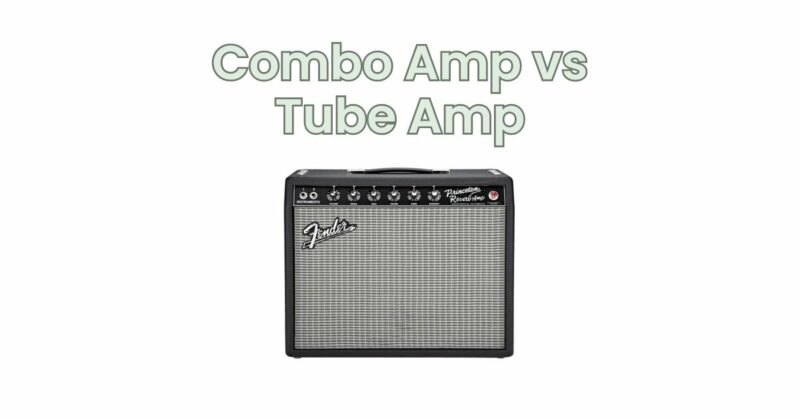When it comes to guitar amplifiers, two popular options that often spark debates among musicians are combo amps and tube amps. Combo amps offer convenience and versatility in a single unit, while tube amps are revered for their warm and dynamic sound. In this article, we delve into the differences between combo amps and tube amps, exploring their unique characteristics, tonal qualities, and considerations to help you make an informed choice based on your musical preferences and playing style.
Combo Amps: Convenience and Versatility Combo amps combine the amplifier and speaker into a single unit, offering an all-in-one solution for guitar amplification. Here are some advantages of combo amps:
- Portability and Space Efficiency: Combo amps are generally compact and portable, making them ideal for gigging musicians and those with limited space. They are easy to transport and set up, simplifying the process of getting your sound on stage or in a practice room.
- Built-In Effects and Features: Many combo amps come equipped with built-in effects, such as reverb, delay, and modulation, as well as additional features like built-in tuners and headphone outputs. These features add convenience and versatility, allowing you to shape your tone and experiment with different sounds without the need for external effects pedals.
- Cost-Effectiveness: Combo amps often offer a cost-effective option compared to purchasing a separate amp head and speaker cabinet. They provide a complete amplification solution at a more affordable price point, particularly for musicians on a budget.
Tube Amps: Vintage Warmth and Dynamic Response Tube amps, also known as valve amps, utilize vacuum tubes to amplify the guitar signal. They are renowned for their distinctive tonal characteristics and dynamic response. Here are some advantages of tube amps:
- Warm and Organic Sound: Tube amps are celebrated for their warm, rich, and harmonically complex sound. The natural compression and harmonic saturation produced by vacuum tubes create a distinct tonal quality that many guitarists find appealing. Tube amps are known for delivering a smooth, musical breakup when pushed to higher volumes.
- Responsive to Playing Dynamics: Tube amps have a highly responsive and touch-sensitive nature. They are known for their ability to translate the subtle nuances of your playing style, offering dynamic response and allowing you to express yourself more effectively through your instrument.
- Distinctive Overdrive and Crunch: Tube amps excel in producing natural, harmonically rich overdrive and crunch tones. As you push the amp’s volume, the tubes gradually saturate, producing a desirable breakup that can range from mild grit to searing distortion, often sought after by guitarists in various genres.
Considerations and Personal Preference: When comparing combo amps and tube amps, several factors come into play:
- Tonal Preference: Combo amps offer a wide range of tones, from clean to high-gain, while tube amps provide a distinct vintage warmth and dynamic response. Consider the tonal qualities that best suit your musical style and preference.
- Playing Style and Volume: Combo amps are versatile and well-suited for various genres and playing styles, while tube amps excel in producing expressive and responsive tones, particularly when played at higher volumes. Think about your playing style and whether you prioritize touch sensitivity and dynamic response.
- Budget and Practicality: Combo amps often offer cost-effective solutions, while tube amps can be more expensive due to the components and manufacturing process involved. Consider your budget, portability needs, and the practicality of carrying separate amp heads and speaker cabinets.
Conclusion: The choice between a combo amp and a tube amp depends on your musical preferences, playing style, and specific requirements. Combo amps provide convenience, portability, and versatility, offering built-in effects and features. Tube amps, on the other hand, deliver a vintage warmth, dynamic response, and distinctive overdrive tones. Consider factors such as tonal preference, playing style, budget, and practicality when making your decision. Ultimately, the best choice is the one that inspires and complements your playing, helping you achieve the tone and sonic experience that resonates with your musical vision.

